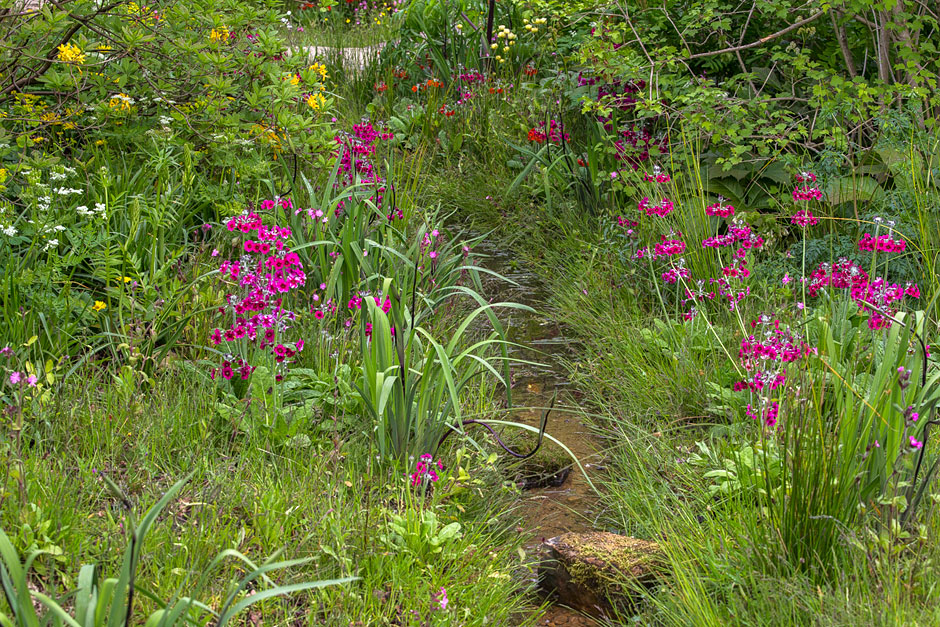The RHS Shows throughout the summer months are the font of inspiration for many of us and as we oooh and ahh at the amazing designs and the seamless planting on display it is difficult to imagine the work and the sleepless nights that go into creating perfection on what is usually a very small plot.
As naturalistic design, gardens for wildlife and low maintenance gardens are still very much de rigour, we continue to help garden designers bring their plans to life by offering a solution, that even though it may have only been planted a couple of days earlier, can look like a scheme that has been in situ for years.
At Wildflower Turf we are well known for providing a solution for show gardens and film sets, that can immediately look like an established meadow. This blog aims to help you, the designer or contractor, to specify and install our turf to successfully create the look that has been envisaged in the design.
TYPES OF SHOW TURF
We have had requests for all sorts of show turf from our classic perennial landscape turf to muddy grass to adorn cat walks inspired by festival chic. We try and be as accommodating as possible but the reality is, it’s all about timing. If you want something grown specifically, our bespoke mixes require a minimum order of 400m² and if required before June, growing of the turf will need to have started in the previous Autumn.
If your order is much smaller and likely to be a mix that is within our existing product range then there is much more flexibility. Every year we designate a number of beds to show turf. This means that it is left to grow on, with a careful eye from us to ensure it looks its very best and provide an instant meadow look. This is generally good news for shows from June onwards but if you are at RHS Chelsea in May you may risk a wet or cold spring not having provided you with adequate growth. Having said that, Dan Pearson’s Gold Medal winning garden used turf straight from our beds in May last year and provided him with just the right amount of colour and height. If you require show turf after the end of July, again we would advise you to grow immature turf on in a polytunnel as the turf on the beds will be at the end of its natural flowering season.
GROW IT ON YOURSELF
When your show is earlier in the year, our normal advice to the contractor would be to take the turf rolled, at least a month in advance in order to grow it on in a polytunnel. With a small amount of heat and water you will have about 30-40cms of growth within 4 weeks. Using heat pads underneath the turf will give it an even bigger boost. By taking the turf rolled from us, delivery costs are kept low.
As an example, Sparshalt College took turf from our turf beds on April 21st last year.

The turf was put into an unheated glasshouse, with regular watering. 20 days later the turf looked like this and was perfect to be used at RHS Chelsea.
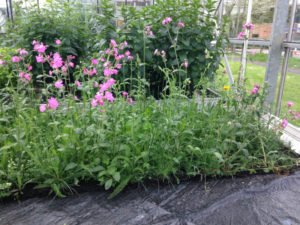

WILDFLOWER SHOW TURF STRAIGHT FROM THE TURF BED
When taking grown on turf directly from us to site, you will need to think carefully about delivery and installation. The turf needs to be transported on a flat bed, if rolled the plants will be damaged. A flat bed capacity on an arctic is 40m². If you need more turf, you will require a stacked transport system such as stillages or dutch trollies. Transportation costs can therefore be expensive. Most contractors come to pick up their turf themselves. Ideally the turf should be laid onto site the same day, but if watered daily, it would be fine for a couple of days before reaching the intended spot.
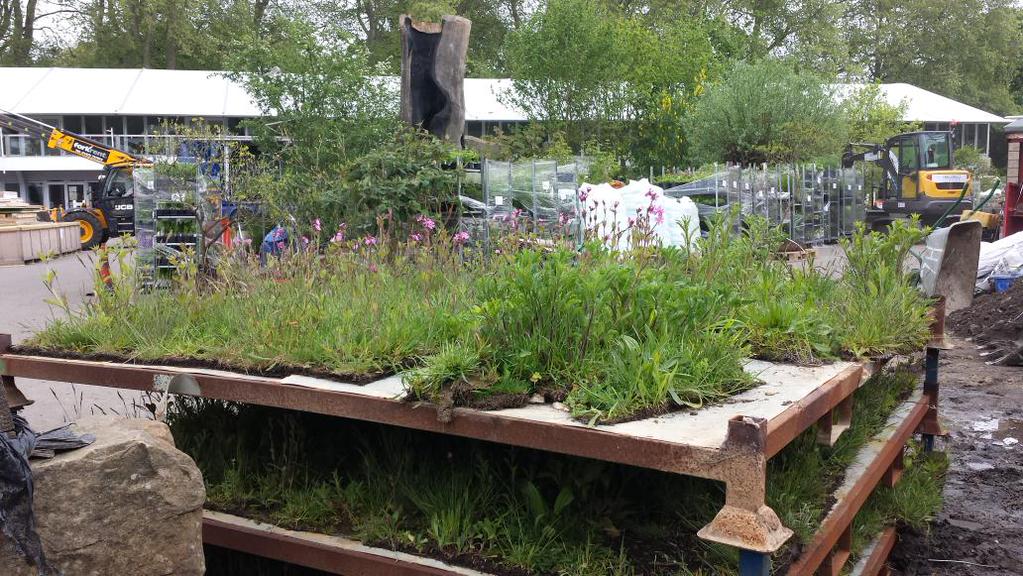
TIMING IS KEY
With only a set amount of turf designated, if you are planning to use Wildflower Turf it is essential to pre-order your turf so that we can monitor its growth and make sure it is at its best for when you want it. Knowing when you can get on site to plant your show garden is just as important as the show date.
DECIDING WHICH TYPE OF TURF IS RIGHT FOR YOU
If you know the look that you want to create but are not sure which would be the right product, give us a call and maybe send a picture of the design and we can let you know what would work best. The most obvious choices being whether or not you want native or non-native varieties. The timing of the show will also impact the look of the meadow. Each wildflower has different flowering times. For native wildflowers, in May, the meadow will naturally look quite pink with campion and ragged robin dominating. As we move into June, white and yellow become the more dominant colours with ox eye daisies, wild carrot and yarrow.
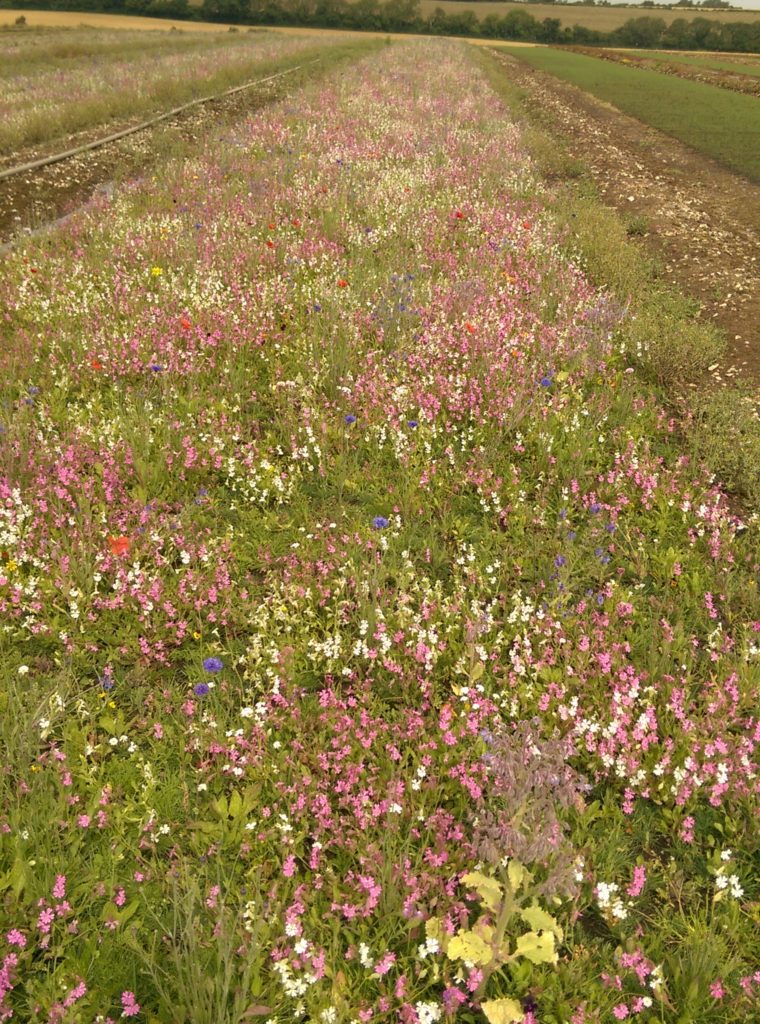
Non-natives will obviously provide more colour through the season and still likely to be flowering through July and August.
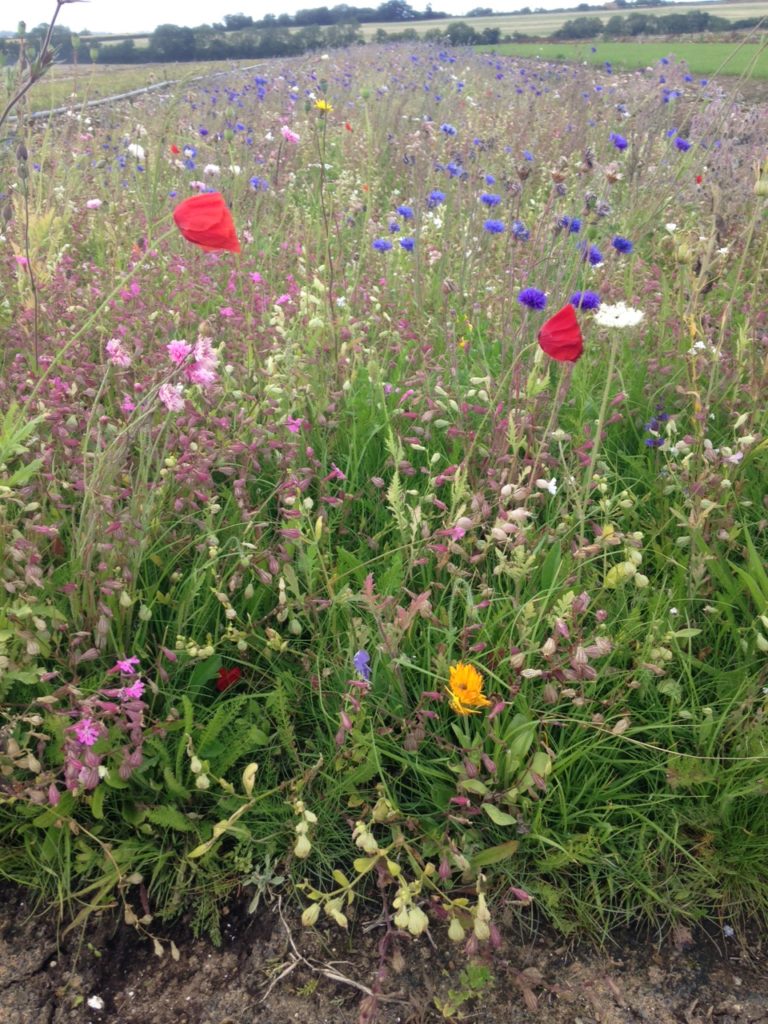
WINNING MEADOWS
Whilst gold medal winning gardens are dependent on outstanding design and exemplary execution, we know that our turf provides the look of a meadow that is well established and thriving and is well known for picking up awards at the highest level. Using Wildflower Turf takes away the stress of planting individual plants saving you time on site whilst creating a very natural look. If you want to add an extra dimension to the meadow area you can use the turf as a base canvas and plug areas with particular flowering species that are relevant to the design. A few plugs can make a significant difference to the look and if there are any plants that are definitely wanted, having plugs in the wings as insurance is a good idea.

